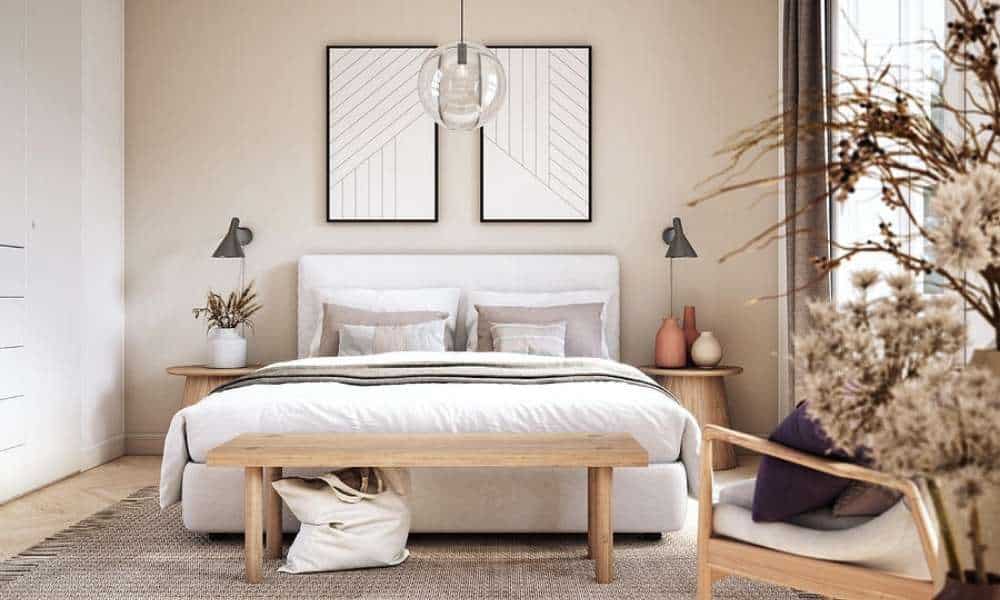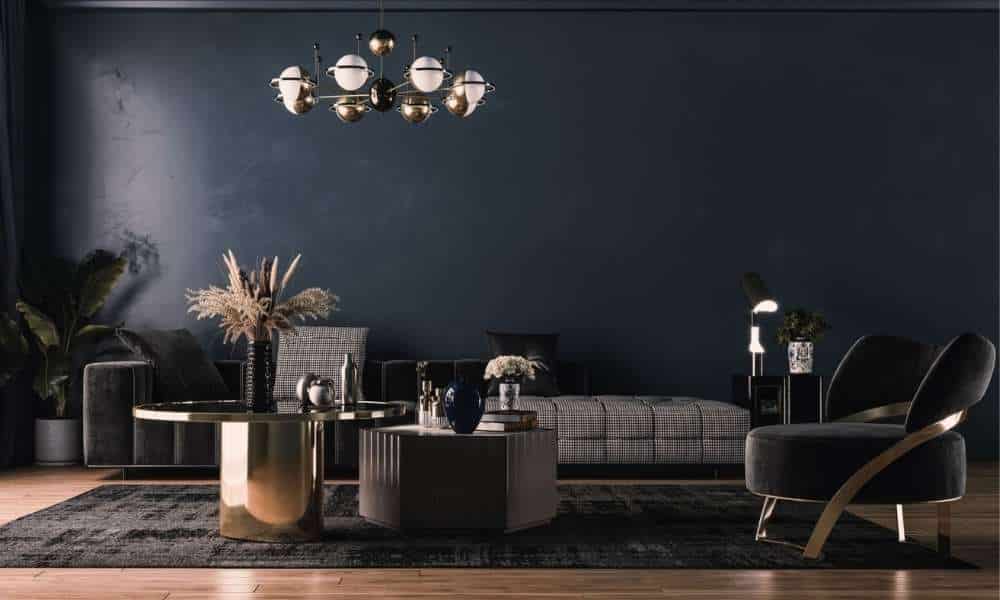In the realm of bedroom design, aesthetics and practicality must intertwine seamlessly. One such seemingly minor yet significant detail is nightstand height. Often overshadowed by bed frames, linens, or lighting, the humble nightstand holds a functional and stylistic role that shouldn’t be underestimated. How tall should a nightstand be compared to the bed? This question sits at the intersection of comfort, accessibility, and design harmony. The right answer isn’t arbitrary—it’s rooted in thoughtful measurement, an understanding of ergonomics, and the subtleties of proportion. Selecting the ideal nightstand height requires more than matching furniture sets; it demands attention to your individual needs, room layout, and sleep habits. Let’s explore the intricate art of choosing the perfect nightstand height.
1. Understanding the Ideal Nightstand Height
The ideal nightstand height is generally one that aligns with the top of your mattress or hovers within a one- to two-inch variance above or below it. This range supports easy access while preserving visual symmetry. But “ideal” is not a universal standard; it shifts based on bed type, user preferences, and practical needs. For example, someone who reads in bed regularly might prefer a nightstand slightly higher to better reach a lamp or book. For others, especially those with minimalist setups, lower nightstands create a sleeker silhouette. The key lies in functionality married with form.
2. Why Nightstand Height Matters in Bedroom Design
Beyond pure utility, nightstand height influences the overall balance and ambiance of a bedroom. A too-tall nightstand can feel domineering next to a low-profile bed, while one too short can look dwarfed and out of place. The right height creates flow and proportion, subtly guiding the eye and shaping how the space feels. It can even impact your mood—disjointed furniture disrupts the serenity of a bedroom, which should ideally be a sanctuary of rest. Cohesion in furniture height also allows décor to be styled evenly, contributing to a room that feels harmonious and curated.
3. Standard Nightstand and Bed Heights Explained
Most standard beds with mattresses included stand around 24 to 30 inches high. Correspondingly, standard nightstands usually range from 24 to 28 inches in height. This overlap allows for natural pairing, but variations in mattress thickness, bed frames, and box springs mean not every combination fits neatly. Memory foam mattresses, for instance, are often thicker and can push the mattress height well above average. In contrast, Japanese-style beds or minimalist frames sit low, rendering standard nightstand disproportionately tall. Understanding these measurements offers a foundation for tailored selections.
4. How to Measure Your Bed Height Accurately
Precision begins with measurement. To measure your bed height, use a measuring tape from the floor to the very top of the mattress. This figure—not the bed frame—is your reference point when selecting a nightstand. Make sure the bed is fully made, with pillows and blankets in place, as this adds to its perceived height. Measure at multiple points, especially if your flooring is uneven or the mattress compresses differently along its edges. Once you have this measurement, you’re equipped to shop with intention.
5. Matching Nightstand Height to Mattress Top
When possible, align the top of the nightstand with the top of the mattress. This ensures that reaching for a glass of water, alarm clock, or reading light feels intuitive and natural. Slight deviations are acceptable, particularly if they serve specific uses. A nightstand that’s an inch or two higher offers easier access when sitting up. But anything more than that risks feeling visually jarring or uncomfortable. A level match provides the gold standard—functional, balanced, and visually coherent.
6. Benefits of a Nightstand Level with the Bed
A level nightstand brings both comfort and elegance. First, it makes nighttime essentials—phones, remotes, or medications—effortlessly reachable. It also allows table lamps to cast light evenly, ideal for reading or ambiance. On the design front, symmetry is psychologically satisfying; it makes a room feel composed and intentional. Furthermore, this alignment facilitates a safer environment. Less bending or stretching means reduced risk of knocking things over or straining your shoulder in the middle of the night.
7. Problems with a Nightstand That’s Too Tall
A nightstand that towers over your bed can be an ergonomic nuisance. It forces you to reach upward—awkward and potentially painful over time. In visual terms, it looms beside the bed, disrupting scale and flow. Tall nightstand can also pose hazards. Imagine trying to grab a ringing phone at 3 a.m., only to knock over a lamp perched at shoulder height. Tall furniture beside a low bed sends conflicting signals to the eye, making the room feel unbalanced and less restful.
8. Issues with a Nightstand That’s Too Short
Short nightstands, though sometimes trendy, can frustrate function. If you have to lean significantly down to reach the surface, especially while lying in bed, the experience is jarring. It can also be unsightly. A short piece beside a tall bed looks disconnected, almost like a mismatched afterthought. Styling such surfaces becomes tricky too. Table lamps may not cast enough light across the bed, and decor items risk getting lost in the visual hierarchy of the room. Accessibility suffers and aesthetics stumble.
9. Ergonomics and Accessibility in Nightstand Design
Ergonomic design respects the natural movements of the body. An accessible nightstand should allow you to reach for your items without twisting, bending awkwardly, or overextending your arm. Think about what you keep on your nightstand—glasses, books, medication, or a cup of tea—and how often you use them. For individuals with mobility issues or chronic pain, height takes on greater importance. It’s not just about comfort; it’s about independence and safety. Good design anticipates these needs and responds with grace.
10. Nightstand Height for Platform Beds
Platform beds, characterized by their low stature and sleek frames, demand nightstands that complement their minimalist ethos. Standard-height nightstands often overpower these beds, visually and functionally. Ideal nightstands for platform beds typically range from 18 to 22 inches. These lower pieces maintain visual continuity while supporting easy reach. Floating nightstands or modular wall units can be stylish alternatives, keeping the profile low and contemporary. They also add an air of intentional design, reinforcing the clean lines associated with modern bedroom aesthetics.
11. Ideal Nightstand Height for Box Spring Beds
Box spring beds sit higher than most, especially when paired with plush or pillow-top mattresses. For these setups, nightstands between 26 and 30 inches typically achieve alignment. Because of their height, these beds benefit from nightstands that can accommodate taller table lamps or layered décor. However, avoid going too high, even with a tall bed. The key remains accessibility. You should still be able to reach the top surface comfortably while lying in bed or sitting on its edge.
12. Adjustable Beds and Their Impact on Nightstand Height
Adjustable beds, prized for their flexibility and support, pose unique challenges for nightstand pairing. As the bed shifts up or down, its height can vary by several inches. A fixed-height nightstand can suddenly become too tall or too low depending on your bed’s position. One solution is to select a mid-range height—around 24 to 26 inches—that offers a reasonable compromise. Alternatively, choose nightstands with multiple levels or shelves, allowing dynamic access regardless of bed elevation.
13. Choosing a Nightstand Height for King-Size Beds
King-size beds often sit grandly in the bedroom, commanding a central visual role. Because of their scale, they require proportionately sized nightstands. This includes not just width and depth, but height as well. For most king beds, nightstands between 26 and 30 inches are suitable, though the mattress height should guide the final choice. Larger nightstands also offer additional storage, which is practical in larger bedrooms. Pairing oversized lamps and symmetrical styling can further enhance the grandeur.
14. Nightstand Height Considerations for Queen-Size Beds
Queen beds, being slightly more modest in scale than kings, offer more flexibility in nightstand selection. A height range of 24 to 28 inches generally works well, providing easy access without overwhelming the bed’s proportions. This size range allows for a wide variety of styles, from sleek mid-century modern pieces to ornate vintage designs. The key consideration remains alignment with the mattress, but design choices can be more varied, especially in smaller or multi-functional rooms.
15. Best Nightstand Height for Small Bedrooms
In compact spaces, every inch matters. Oversized nightstands can crowd a small bedroom and disrupt traffic flow. Choosing a slightly lower nightstand—around 22 to 24 inches—can create an illusion of more space. Slim profiles and open bases help keep the area feeling airy. Wall-mounted or floating nightstands are especially effective here, offering surface area without taking up valuable floor space. Even in a smaller footprint, maintaining the right height ensures the piece remains practical and stylish.
16. Styling Tips for Mismatched Nightstand Heights
Sometimes mismatched nightstand heights are unavoidable—especially in shared bedrooms or eclectic designs. The key to pulling it off lies in balance. Pairing different heights with similar materials, colors, or design styles can create cohesion. Use visual tricks like stacking books or adding risers to even out surfaces. Matching lamps in different heights can also bridge the gap. When done thoughtfully, mismatched nightstands bring character and charm, turning a functional necessity into a bold design choice.
17. Using Floating Nightstands to Match Bed Height
Floating nightstands provide a flexible solution to height dilemmas. Because they’re wall-mounted, you can install them at the exact height of your mattress. This customization ensures perfect alignment, regardless of bed style. They’re also excellent for modern and minimalist interiors, offering a sleek, uncluttered appearance. Floating designs can incorporate drawers, shelves, or even built-in lighting, making them as functional as they are beautiful. Best of all, they leave floor space open, ideal for tight quarters or showcasing rugs.
18. Custom Nightstands: When to Go Bespoke
Custom nightstands are a smart solution when conventional options fall short. Whether your bed is unusually high or you have specific storage needs, bespoke pieces let you dictate dimensions, materials, and features. This route is especially useful for rooms with unique layouts or themes. A custom piece can also blend seamlessly with existing furniture, elevating the room’s overall aesthetic. While custom furniture may cost more upfront, it delivers tailored functionality and timeless design.
19. Practical Tips for Buying the Right Nightstand
Before making a purchase, measure your bed height and evaluate your space constraints. Prioritize functionality—how many drawers do you need? Will it hold a lamp, books, or both? Test potential options by sitting or lying on your bed and imagining reaching for items. Consider materials that complement your other furnishings. If buying in-store, physically test the drawer mechanisms and finishes. Online shoppers should check dimensions carefully and read reviews. Aesthetics matter, but utility reigns supreme in daily life.
Learn how to measure a nightstand correctly for perfect fit and functionality in your bedroom with these simple tips.
20. Final Thoughts
The question—how tall should a nightstand be compared to the bed—has no one-size-fits-all answer. It depends on mattress height, bed style, room size, and personal preferences. However, the goal remains consistent: create a space where comfort, access, and design intersect gracefully. A properly sized nightstand is more than just furniture; it’s a silent partner in your daily routine, supporting rest, utility, and style. Choose thoughtfully, and your nightstand will become one of the most functional—and beautiful—elements in your bedroom sanctuary.






